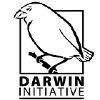- Locations: Brahmaputra River, India
- Active dates: 2011 - 2015
Aims
Development of a long-term regional dolphin research and conservation management strategy, particularly for the Brahmaputra river ecosystem, sustained by continued engagement with local fishing communities.
Species
Background
Occurring in the Ganges-Brahmaputra-Megna and Karnaphuli-Sangu river systems of the Indian subcontinent, it is the sole survivor of a cetacean group that occurred in all of the world’s oceans millions of years ago. It swims on its side and upside down and is virtually blind, using ‘fingers’ on its fins and echolocation to find food along the river bottom. They are ‘flagship’ predators and play a very important role in maintaining the health of the freshwater river habitat. Following the extinction of the Yangtze River dolphin, the endangered Ganges River dolphin is now the most threatened freshwater cetacean, with around 2,000 individuals left (of which less than 300 remain in the Brahmaputra river).
Actions
Carry out standardised methods for monitoring dolphin status, habitat preferences and population movements in rivers using visual/sonar surveys, mapping of habitat and fish populations and interviewing locals for information.
Investigate the significance of different threats responsible for dolphin death, using post-mortems, interviews, and initiating efforts to reduce/prevent the prioritized threats in association with concerned stakeholders.
Thoroughly measure the effects of water-borne pollutants on dolphins, the Brahmaputra River ecosystem and riverside communities through water quality monitoring.
To strengthen and build local capacity to protect identified dolphin hotspots.
Investigate exactly which fish are commercially or ecologically important and the effect that fishing has on wider-scale ecosystem health. This will create a strong foundation on which to develop and implement sustainable recovery plans for the Brahmaputra dolphin population as well as regional freshwater ecosystem services
Gallery
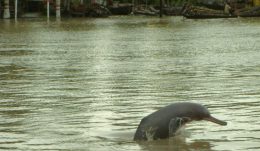
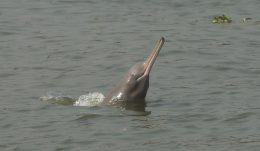
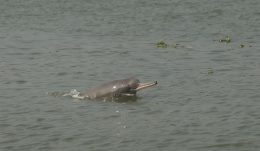
Achievements
The Dolphin Conservation Network (DCN), composed of 30 local volunteers based in 30 dolphin priority sites was assessed, reorganised and strengthened.
A steering committee for effective programme management was established, with members from ZSL, Aaranyak & WII.
A survey boat was constructed for the purpose of dolphin monitoring in the Brahmaputra.
The training of 5 programme core staff and 30 DCN members in standardised boat-based dolphin surveys.
Community engagement and awareness activities aiming to educate local fishermen and students on dolphin conservation and carried out in and around allotted DCN sites.
The ‘Dolphin Yatra’-a drama performance to raise awareness carried out by a local theatre group along the banks of the Brahmaputra.
An alternative livelihood project set up to use Water Hyacinth to make products (including weaved baskets and bags) to offer fishermen and their families an alternative source of income
Associated Fellows
Collaborators and Supporters
-
Rufford Foundation
-
Conservation Leadership Programme
-
Darwin Initiative
-
Mohammed Bin Zayed Conservation Fund
Related blog posts
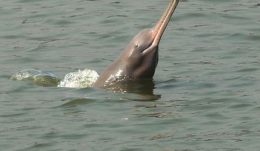
Researching the Ganges River Dolphin in Bangladesh: a PhD to remember!
The Ganges River Dolphin (Platanista gangetica) is not your conventional ‘Flipper’: they are virtually blind and live in murky rivers; they aren’t particularly social…

New Sanctuaries for Asian River Dolphins
Earlier this week Bangladesh announced that three areas in the southern Sundarbans mangrove forest will be declared sanctuaries to protect Ganges river dolphins (Platanista…


